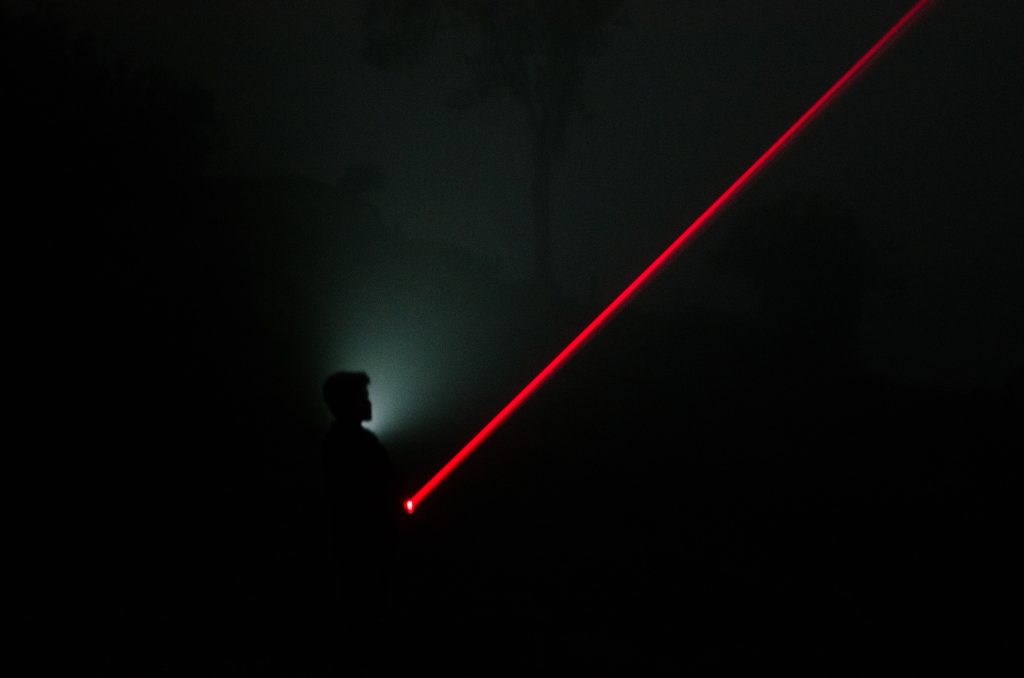7 Things That You Didn’t Know Were Made With Lasers

Perhaps the most famous physicist to ever live, Albert Einstein, had a role in inventing lasers. Einstein’s theory of simulated emission is thought to have paved the way for the layers that we all use today. The term LASER – light amplification by simulated emission of radiation – hints at the properties in physics that allow atoms and photons to change their energy levels and emit different wavelengths, or colors.
Lasers Have Been Around a Long Time
Lasers were first invented back in 1958. Today, the use of lasers has evolved to include many different military, commercial, and medical applications.
That said, lasers also have their fun side and can serve as entertainment at laser light displays backdropping a concert or dance party. Lasers are even used in games of laser tag. What are some of the more serious uses of lasers, though?
The Military Uses Lasers
The defense contractor Boeing makes a number of lasers that are intended to shoot down missiles before they can do any damage. Boeing’s Airborne Laser developed out of the Strategic Defense Initiative of the 1980s, which many commentators at the time lampooned as being “Star Wars” and essentially an extravagant waste of money.
Lasers nonetheless have continued to find military applications and have been used as ground- and space-based defensive systems against intercontinental ballistic missiles from hostile powers. More nefariously, lasers have also shown promise as a means of dispersing crowds. The Thales’ Green Laser Optical Warner will dazzle protesters into disorientation.
Eye Surgery
Laser eye surgery uses laser to reshape the surface of the eye and correct both short- and long-sightedness. Lasers are also used by ophthalmologists to correct astigmatism. Many people who get laser correction for their vision will leave the office with 20/20 vision and the chance to throw away their glasses once and for all.
Weather Systems
Lasers might even affect weather systems. There is mounting evidence that lasers might one day be used to combat the effects of climate change. Lasers have shown promise in inducing lightning storms and heavy rains.
Because one of the nasty side effects of climate change is hotter weather and extended droughts, the ability of lasers to induce rains could mean that millions of acres of crops get water and countries don’t suffer as deeply from drought. This could all be made possible through man-made manipulation of the weather and high energy lasers.
Bird Deterrent
In the same way that governments and police departments are deploying lasers to disperse crowds, farmers are using lasers to disperse birds. Even the Department of Agriculture is using lasers to disperse birds from agricultural land, industrial areas, and airport runways. Few people know this, but the Department of Agriculture is actually the agency tasked with getting birds off the runway!
Lasers Might Heat Homes
Lasers are used in high-energy nuclear fusion as optical amplifiers. The idea is that high intensity pulses of light with a short enough duration can produce more of a reaction in terms of nuclear fusion. Tritium and deuterium are both short at with lasers and atomic fusion is the result.
The process is known as inertial confinement fusion, and its goal is creating nuclear fusion through compressing and heating up fuel targets. All of this work is incredibly granular in the sense that the area being heated up is the size of a single pinhead and the amount used as fuel is on the order of ten milligrams.
Nonetheless, all of this energy produced from an incredibly small, but powerful, source can be used to heat people’s homes.
Lasers for Firearms
Lasers have been used for missiles and firearms for decades, but it wasn’t until 2007 that a company known as LaserMax started using a small laser on commercially available firearms. A small laser is mounted to the underside of a handgun or the accessory rail of a long arm in order to give a richer line of sight.
Green lasers are used over red ones because those have been shown to be easier to see in bright light conditions than red lasers, which can blend in with the ultraviolet end of the spectrum. Lasers are truly an incredibly versatile, evolving technology.

















